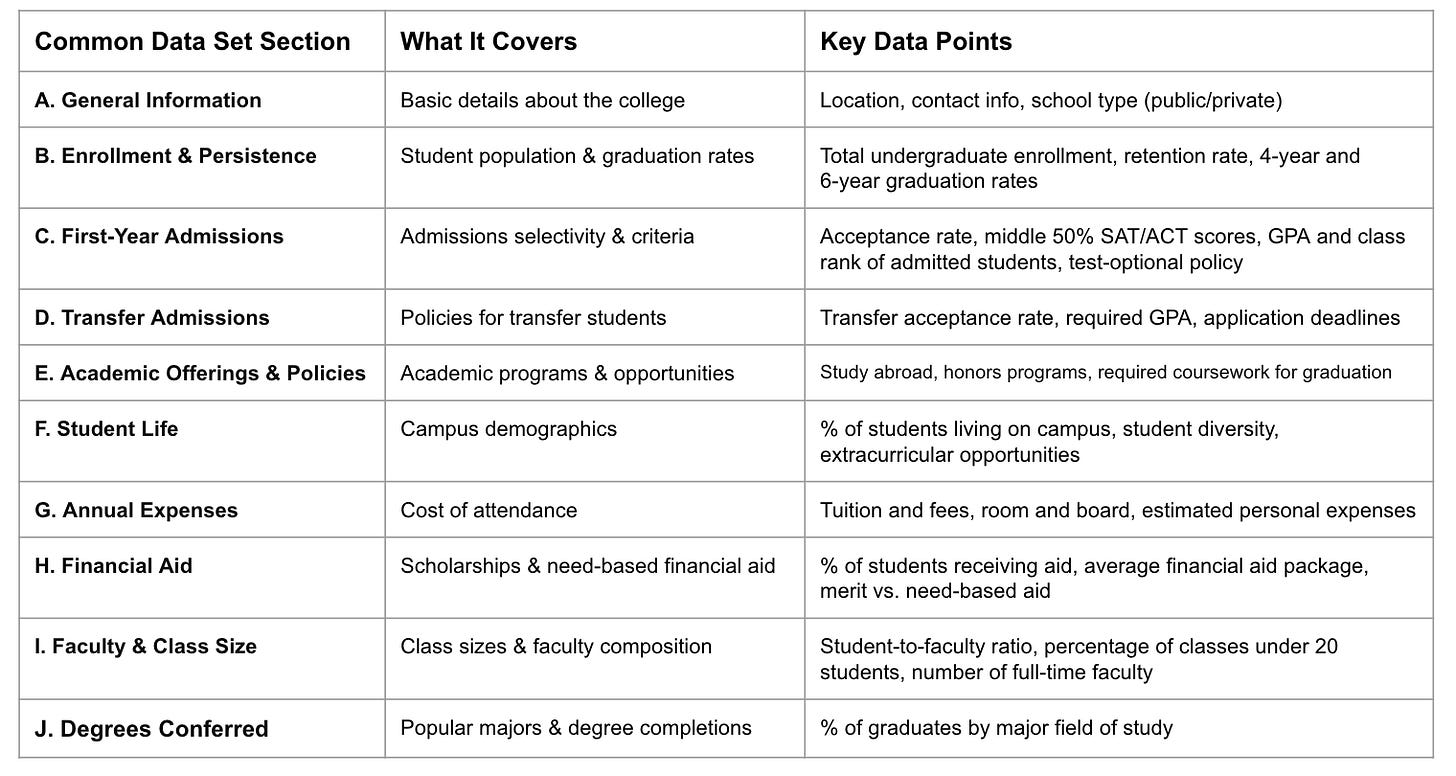How to Use the Common Data Set (CDS) to Build a Smarter College List
In this post, we’ll break down what the Common Data Set is, where to find it, and how to use key data points to compare schools, assess your admissions chances, and make informed college decisions.
What is the Common Data Set (CDS) and Why Should You Care?
The college search process can be overwhelming—so much information, so many rankings, and lots of noise.
The Common Data Set (CDS) is a standardized set of data points that colleges report each year (to the US Government). It includes statistics on admissions, financial aid, academics, student life, and more.
The problem? Most students and parents don’t even know it exists!
This post will walk you through why the CDS is a powerful tool and how to use it to refine your college list.
1. Where to Find the Common Data Set
Colleges publish CDS data on their websites, but it’s often buried in institutional research pages.
Shortcut: Use Google—search “[College Name] Common Data Set” to find the latest version.
The CDS is most commonly a PDF file, occasionally an Excel file, and very rarely a web dashboard.
Some third-party tools (e.g., BigFuture, College Navigator, CollegeData.com, etc…) compile CDS data, but it’s best to check the original source on the college’s website. Why? Because many times these aggregators are using older data—sometimes several years old (think: pre-Covid). You want to be using the latest information.
2. Understanding Key Data Points in the CDS
The Common Data Set (CDS) is structured into different sections, each covering key aspects of a college or university.
Below is a breakdown of each section of the CDS and the most useful data points you’ll find in each.
Using the CDS to Answer Common Questions
Want to know your chances of admission? → Check Section C (First-Year Admissions)
Worried about financial aid? → Look at Section H (Financial Aid)
Interested in small class sizes? → Check Section I (Instructional Faculty & Class Size)
Trying to compare costs? → Review Section G (Annual Expenses)
A few more examples:
“Do I need to submit test scores?” → Look at the percentage of students admitted without them
“How many students actually graduate?” → Check the 4-year and 6-year graduation rates
“Will I get merit scholarships?” → Compare the percentage of students who receive merit aid
3. Using the CDS to Build a Smarter College List
There are a few key benefits of using the Common Data Set (CDS) to research colleges:
Compare schools side by side: Don’t rely on marketing materials—use the data.
Find hidden gems: Some schools with lower name recognition have excellent outcomes.
Reality check your admissions chances: Use CDS data to gauge fit instead of over-relying on rankings.
Assess financial fit early: If a school is stingy with aid, it may not be the best option.
Conclusion: Be Your Own College Data Scientist
Instead of relying on rumors or rankings, use real data to guide your college search.
The CDS is a free, powerful tool that most students and parents overlook—now you know how to use it.
Spend an hour researching your top colleges with the CDS. You’ll be surprised at what you learn.




